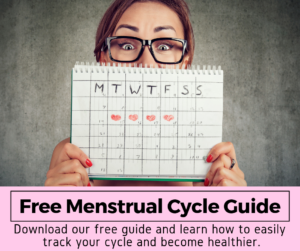The use of the oral contraceptive pill (OCP) is so widespread in today’s culture that it is difficult to imagine a landscape without it.
One way in which OCPs are used is to ease the symptoms of hormonal imbalance. These symptoms can include acne, facial hair, weight gain, cramps and abdominal pain, missed periods and missed ovulations (in other words, irregular cycles of many different kinds), and more. Unfortunately, most contemporary medical doctors don’t describe the symptoms for which the pill is prescribed to be ‘dysfunctions.’ They assume them to be either normal or to be symptoms that cannot be treated in a more integrated way.
A second use of the OCP is the more common: to halt the hormonal activity that should trigger, in any given healthy reproductive cycle, a woman’s ovulation and thus her fertility. In other words, the second use of OCP is birth control or the regulation of fertility. Again, most contemporary medical doctors don’t describe to women that, in blocking her ovulation with OCP use, a woman also blocks the activity of key hormones that maintain her general health, both prior to and beyond her fertility.
The development of the OCP as a form of reproductive ‘technology’ historically precedes the development of a fully coherent understanding of a woman’s reproductive activity. This makes the framework within which the OCP is prescribed deeply outdated, and thus problematic.
In other words, today’s (modern) research in reproductive endocrinology (hormonal health) testifies to the vital link between a woman’s reproductive activity, especially her ovulation, and the health of her entire body, with a specific link to the brain and other body systems. Long before this link was discovered, the OCP was developed and proposed as the most efficacious method of managing fertility. It wasn’t long before OCPs became the most efficacious means of treating women’s symptoms.
Without all this information derived from new research, a woman cannot make a fully informed choice about her reproductive health. If medical doctors do not have knowledge of the most updated research, they won’t be able to fully inform their patients.
Below are some key advances in research that women deserve to know before making decisions regarding management of hormonal abnormalities or unpleasant symptoms. Even as doctors are tapped into modern statistics about contraceptive use, patterns of infertility, and more, many of them are unaware of these advances in women’s endocrinology:
- The integration of the four reproductive cycle hormones with the brain: The follicle stimulating hormone (FSH), which begins the growth of the follicle and thus launches the cycle; the luteinizing hormone (LH), which triggers the rupture of the follicle in ovulation; estrogen, which stimulates the growth of the uterine lining and causes the production of a fertile mucus; and progesterone, which prepares the uterine lining for implantation of a fertilized egg, is necessary to maintain a healthy pregnancy, and is important for hair, heart, and bone health. These hormones are essential for not just the manifestation of fertility but for the integration of general health, across all body systems. In a woman of reproductive age, where ovulation occurs regularly, the system is deemed to be integrated; where ovulation does not occur, there is a reason for the lack of it. Anovulation (the lack of ovulation in any given cycle) is a sign of hormonal disruption, and could be the first sign of a problem elsewhere in the body, especially the metabolic system. Think blood sugar/diabetes as one example.
- Hormonal contraception, by its necessary mechanisms, sends negative feedback to the brain to prevent the launch of the follicle stimulating hormone. In other words, the OCP is designed to ‘turn the brain off’ with regards to the cycle, but in ‘turning the brain off’ here, regular OCP use has the capacity to alter neurological links in the brain in such a way as to affect other body systems and general health.
- Hormonal abnormalities that arise during puberty, manifested in irregular cycles and physiological symptoms, will not spontaneously resolve. In other words, where there are irregular cycles and physiological symptoms, the hormonal irregularity will not fix itself, and this requires careful work on behalf of a medical provider. Where a young girl is given the OCP to manage these symptoms, she will go for years, potentially decades, without ever fully understanding or getting treated for the root cause of her menstrual irregularity.
- Where a cycle is healthy, the fertility pattern will be clear in a woman. This means that methods of family planning which rely on the identifying of patterns of fertility in a woman’s body via the production of fertile cervical mucus will be clear and effective ways of managing fertility without relying on a form of technology. The lack of a woman’s ability to identify fertility, and fertile versus infertile patterns in her own, individual cycle, is almost always an indicator of a lack of integration in the body. It could be said that the widespread use and application of the OCP is superfluous. OCPs cannot impact fertility in a woman who is infertile due to a lack of health and hormonal balance, and is inessential in a woman who is healthy, since she can be educated to identify the signs of her own fertility.
About the Author

Weronika Janczuk works as a literary agent with D4EO Literary Agency, where she has represented award-winning writers of fiction and non-fiction, selling books to publishing houses. She is a daughter to Polish immigrants, and completed a self-designed B.A. in the philosophy of the human person at NYU’s Gallatin School of Individualized Study.






